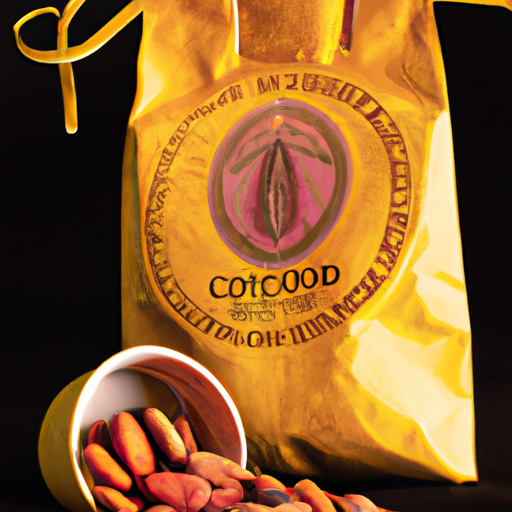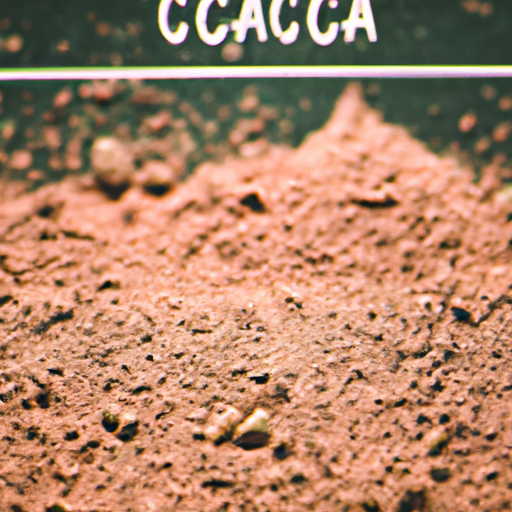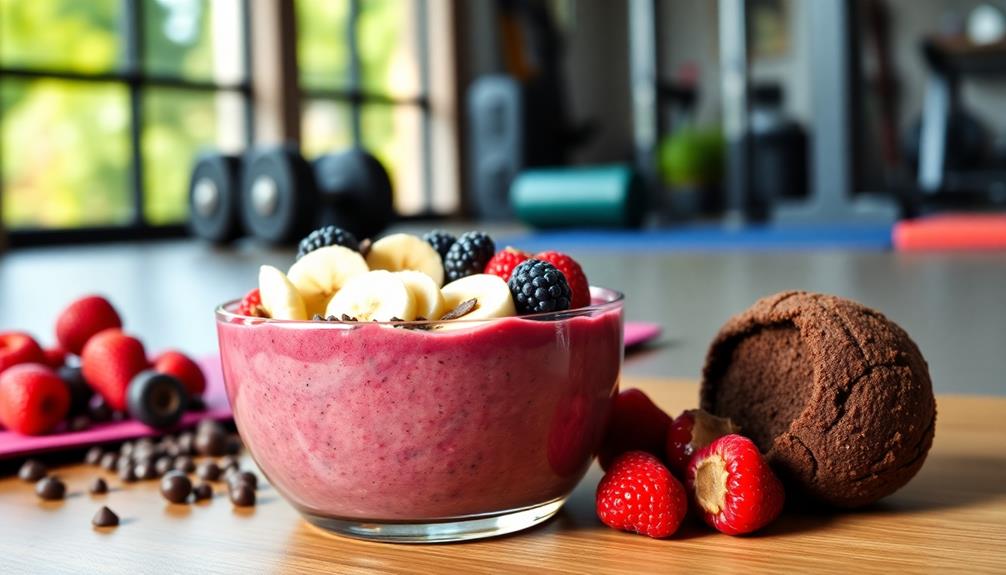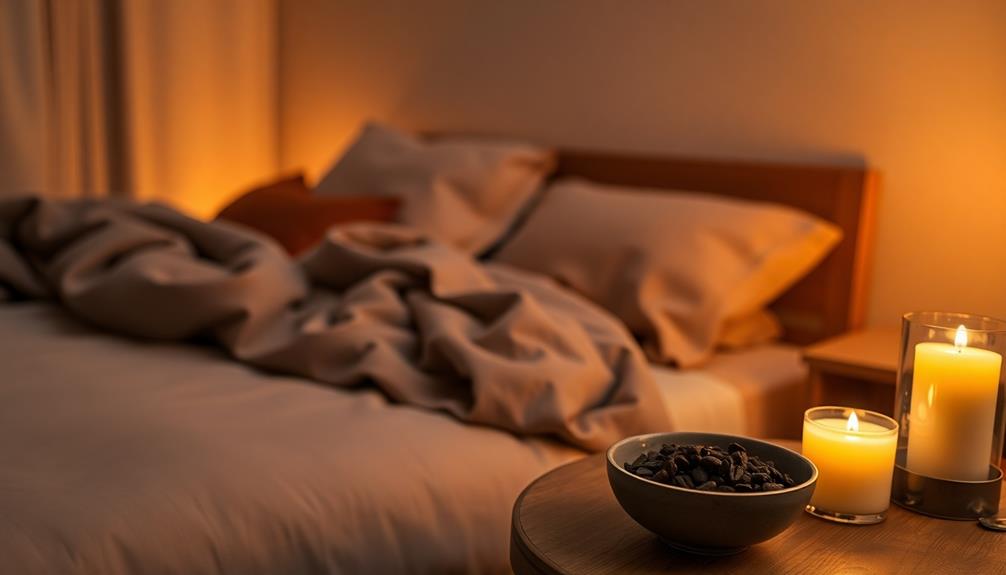Have you ever thought about how long raw cacao lasts? It’s a question that has fascinated me for a while. As a fan of all things chocolatey, I’ve always been interested in the longevity of this delicious treat.
In my quest for answers, I’ve delved into the world of storage tips, expiration dates, and misconceptions surrounding raw cacao. And let me tell you, the results are fascinating.
So, if you’re like me and want to make sure you’re getting the most out of your raw cacao, stick around. I’ll be sharing all the scientific and informative details on how to properly store raw cacao, how long it lasts, and what to do with expired batches.
Get ready to dive into the world of raw cacao and discover the secrets behind its longevity.
Key Takeaways
- Raw cacao can be stored for different periods depending on the form: whole beans (2-3 years), nibs (1-2 years), and powder (6-12 months).
- Expired raw cacao can still be used in various ways such as homemade face masks, body scrubs, coffee, smoothies, and baking recipes.
- To properly store expired cacao, use an airtight container and add a desiccant packet to prevent moisture.
- To extend the shelf life of raw cacao, store it in a cool, dark place, use an airtight container, and consider refrigeration.
Storage Tips for Raw Cacao
To ensure the freshness and deliciousness of your raw cacao, proper storage methods are essential. Here are some tips to keep in mind:
-
Store raw cacao in an airtight container, away from direct sunlight, moisture, and strong odors. This will prevent the cacao from absorbing unwanted flavors or moisture.
-
Choose a cool and dry place, such as a pantry or cupboard, to store your raw cacao. The ideal temperature for storage is between 60-70 degrees Fahrenheit.
-
Make sure to seal the container tightly to maintain the freshness and quality of the raw cacao.
By following these storage tips, you can extend the shelf life of your raw cacao and enjoy its rich taste and velvety texture for a longer period of time.
Now, let’s delve into understanding the shelf life of raw cacao.
Understanding the Shelf Life of Raw Cacao
Did you know that the shelf life of unprocessed cacao can surprise you? Raw cacao, when stored properly, can last for a long time, allowing you to enjoy its health benefits whenever you want. It is important to understand the factors that affect the shelf life of raw cacao and the available storage options to ensure its longevity.
To help you visualize the shelf life of raw cacao, here is a table that shows the approximate storage times for different forms of raw cacao:
| Form of Raw Cacao | Storage Time |
|---|---|
| Whole beans | 2-3 years |
| Nibs | 1-2 years |
| Powder | 6-12 months |
By following proper storage techniques such as keeping raw cacao in a cool, dark, and airtight container, you can extend its shelf life and maintain its quality.
Understanding the shelf life of raw cacao is crucial for knowing when to properly use expired raw cacao without compromising its taste or health benefits.
Properly Using Expired Raw Cacao
Expired raw cacao can still be effectively utilized if you store it properly and follow some simple tips. To store expired cacao, keep it in an airtight container in a cool, dark place to prevent moisture and air exposure. Adding a desiccant packet inside the container can help absorb any remaining moisture.
When it comes to using expired cacao, get creative! Use it as a natural exfoliant in homemade face masks or body scrubs. You can also add it to your morning coffee or smoothies for an extra boost of antioxidants. Another option is to use it in baking recipes, like cookies or brownies, to enhance the flavor.
By properly storing expired cacao and exploring creative ways to use it, you can make the most out of your supply. Now, let’s transition into the subsequent section and discuss how to extend the shelf life of raw cacao.
Extending the Shelf Life of Raw Cacao
To extend the shelf life of raw cacao, it’s important to follow proper storage techniques and precautions against moisture and air exposure. Here are some key tips:
- Store raw cacao in a cool and dry place, away from direct sunlight and strong odors.
- Use an airtight container to prevent moisture absorption and oxidation.
- Refrigeration can further prolong its shelf life.
By following these storage methods, you can ensure that your raw cacao maintains its flavor and nutritional properties for longer.
Now, let’s explore the differences between raw cacao and processed chocolate.
Differences Between Raw Cacao and Processed Chocolate
One key distinction between raw cacao and processed chocolate lies in their production methods and the ingredients used.
Raw cacao is made from the seeds of the cacao tree, which are fermented and dried, while processed chocolate undergoes additional steps such as roasting, grinding, and refining.
Raw cacao retains more of its natural nutrients and antioxidants compared to processed chocolate, which often contains added sugars, fats, and other additives.
Raw cacao is known for its numerous health benefits, including being a rich source of magnesium, iron, and antioxidants that can help improve cardiovascular health and boost mood.
Processed chocolate, on the other hand, may have a smoother texture and sweeter taste due to the addition of ingredients like sugar and milk.
Understanding the nutritional differences between raw cacao and processed chocolate is essential when considering their impact on health. However, it’s important to address common misconceptions about raw cacao shelf life.
Common Misconceptions About Raw Cacao Shelf Life
When it comes to raw cacao and cocoa powder, there are often misconceptions about their differences and shelf life.
Raw cacao is the purest form of chocolate, while cocoa powder is processed and may contain additives.
It’s important to properly store opened packages of raw cacao or cocoa powder to maintain their freshness and flavor.
Additionally, the roasting process of cocoa beans can impact the shelf life of both raw cacao and cocoa powder.
Understanding the effects of roasting on these products is crucial.
Raw Cacao vs. Cocoa Powder
Contrary to popular belief, raw cacao is not the same as cocoa powder. It’s like comparing a vibrant sunrise to a dull photograph.
Raw cacao is made from unroasted cacao beans, which are packed with nutrients and antioxidants. It retains its natural enzymes, minerals, and vitamins due to the minimal processing. This makes raw cacao a powerhouse of health benefits, including improved heart health, increased mood, and enhanced cognitive function.
Additionally, raw cacao is a versatile ingredient in baking, adding a rich chocolate flavor and nutritional value to desserts and snacks.
However, it’s important to properly store opened packages of raw cacao to maintain its freshness and prevent spoilage. This will be discussed in the subsequent section on properly storing opened packages.
Properly Storing Opened Packages
To keep your opened package of raw cacao fresh and flavorful, make sure you store it properly. Here are three key tips for proper storage:
-
Store at the right temperature: Raw cacao should be stored in a cool, dry place with a temperature range between 60-70°F (15-21°C). Avoid exposing it to extreme heat or cold, as this can degrade its quality and flavor.
-
Use airtight containers: Transfer the raw cacao into an airtight container, such as a glass jar or a resealable plastic bag. This will prevent moisture and air from reaching the cacao, ensuring it stays fresh for a longer period.
-
Keep away from strong odors: Raw cacao can easily absorb odors from its surroundings, impacting its flavor. Store it away from strong-smelling foods like spices, onions, or garlic.
Proper storage is crucial to maintain the quality of raw cacao. Now, let’s explore the impact of roasting on its shelf life.
Impact of Roasting on Shelf Life
When it comes to the shelf life of raw cacao, the impact of roasting cannot be ignored. Roasting cacao beans is a common practice in the chocolate industry, as it enhances the flavor and aroma of the final product. However, this process also affects the nutritional value and shelf life of raw cacao. While roasting can extend the shelf life by reducing moisture content and inhibiting microbial growth, it also leads to the loss of certain heat-sensitive nutrients and antioxidants. Thankfully, there are alternatives to roasting that can preserve the nutritional benefits of raw cacao. For example, some manufacturers use a low-temperature drying process or cold pressing to maintain the integrity of the beans. These methods help retain more of the natural antioxidants and nutrients found in raw cacao. Now, let’s explore some recipes and ideas for using raw cacao in various culinary delights.
Recipes and Ideas for Using Raw Cacao
Indulge your taste buds with delectable recipes and creative ways to incorporate the rich and velvety goodness of raw cacao. Raw cacao is not only delicious, but it also offers numerous health benefits.
You can use raw cacao in various recipes, such as smoothies, desserts, and even savory dishes. Adding a sprinkle of raw cacao nibs to your morning oatmeal or blending it into a creamy chocolate smoothie can elevate the flavors and provide a burst of antioxidants and minerals.
You can also experiment with raw cacao in baking, substituting it for regular cocoa powder or chocolate chips. The possibilities are endless when it comes to using raw cacao in the kitchen.
So, let’s dive into these delectable recipes and reap the benefits of this superfood.
Now, let’s explore how to source fresh and high-quality raw cacao.
Sourcing Fresh and High-Quality Raw Cacao
When it comes to sourcing fresh and high-quality raw cacao, there are a few key points to consider.
Firstly, it is important to buy from reputable brands or farmers with a proven track record of providing top-notch products. This ensures that the cacao you purchase will be of the highest quality.
Additionally, checking for certifications and quality standards is crucial. This helps to guarantee that the cacao you are buying meets the highest standards of quality and safety.
Lastly, opting for fair trade and sustainable options is essential. This not only supports ethical practices but also promotes the long-term well-being of cacao farmers and the environment.
By following these guidelines, you can ensure that you are sourcing fresh and high-quality raw cacao for your needs.
Buying from Reputable Brands or Farmers
To ensure you’re getting the freshest and highest quality raw cacao, opt for reputable brands or farmers who take pride in their craftsmanship. Buying from local producers not only supports the community but also ensures a shorter supply chain, reducing the time between harvest and consumption. Raw cacao is known for its numerous health benefits, including being rich in antioxidants and minerals like magnesium and iron. By choosing reputable brands or farmers, you can have confidence in the sourcing and processing methods used, guaranteeing a product that retains its nutritional value. Check for certifications and quality standards to further ensure the integrity of the raw cacao you’re purchasing. This guarantees that you’re getting a product that meets the highest industry standards and is free from contaminants. Transitioning into the next section, it’s important to understand how to check for certifications and quality standards.
Checking for Certifications and Quality Standards
By seeking out reputable brands or farmers who prioritize quality, you can be confident in the integrity of the raw cacao you purchase, ensuring it meets certifications and quality standards.
When buying raw cacao, it is important to check for certifications that indicate the product has been tested and meets specific quality criteria. Look for certifications such as USDA Organic, Fair Trade, and Rainforest Alliance, which guarantee that the cacao has been produced in an environmentally sustainable and socially responsible manner.
These certifications ensure that the cacao has been grown without the use of harmful chemicals, promotes fair wages and working conditions for farmers, and supports sustainable farming practices. By choosing cacao with these certifications, you can contribute to a more ethical and sustainable cacao industry.
Opting for fair trade and sustainable options is a crucial step in supporting the well-being of farmers and the environment.
Opting for Fair Trade and Sustainable Options
Choosing fair trade and sustainable options for your cacao not only supports ethical farming practices but also contributes to the overall well-being of farmers and the environment. Fair trade benefits farmers by ensuring they receive fair wages and work in safe conditions. It also helps to alleviate poverty and empower communities. Sustainable farming practices focus on preserving natural resources, reducing chemical use, and promoting biodiversity. By opting for fair trade and sustainable cacao, you are making a positive impact on the livelihoods of farmers and protecting the delicate ecosystems where cacao is grown.
To better understand the benefits of fair trade and sustainable options, consider the following table:
| Fair Trade Benefits | Sustainable Farming Practices |
|---|---|
| Fair wages | Preserving natural resources |
| Safe working conditions | Reducing chemical use |
| Poverty alleviation | Promoting biodiversity |
By choosing fair trade and sustainable options, you are supporting farmers while safeguarding the environment. Transitioning to the next section, it is important to also enjoy raw cacao responsibly.
Enjoying Raw Cacao Responsibly
When it comes to enjoying raw cacao responsibly, there are a few key points to keep in mind.
First, portion control and moderation are important. While raw cacao can have health benefits, consuming too much can lead to negative effects.
Second, it’s important to be aware of potential allergenic reactions. Some people may be sensitive or allergic to cacao, so it’s important to listen to your body and seek medical advice if needed.
Lastly, if you have any underlying health conditions or concerns, it’s always a good idea to consult a healthcare professional before incorporating raw cacao into your diet.
Portion Control and Moderation
Although moderation is key, it’s important to consider portion control when consuming raw cacao to ensure its freshness. Raw cacao is known for its numerous health benefits, such as being rich in antioxidants and minerals. However, consuming excessive amounts can lead to negative effects on the body. By practicing portion control, you can enjoy the benefits of raw cacao without overloading your system.
To help you understand the appropriate portion sizes, here is a table highlighting the recommended serving sizes based on different forms of raw cacao:
| Form of Raw Cacao | Recommended Serving Size |
|---|---|
| Raw Cacao Nibs | 1 to 2 tablespoons |
| Raw Cacao Powder | 1 to 2 tablespoons |
| Raw Cacao Butter | 1 to 2 teaspoons |
By following these portion guidelines, you can savor the unique flavors and health benefits of raw cacao while maintaining freshness and avoiding potential negative effects.
Moving forward, it’s important to be aware of potential allergenic reactions that raw cacao may trigger.
Potential Allergenic Reactions
Consuming excessive amounts of raw cacao can potentially trigger allergenic reactions, which is important to be aware of when enjoying its health benefits. It is crucial to understand the potential side effects and manage allergenic reactions appropriately. Here are four key points to keep in mind:
-
Allergies: Raw cacao contains proteins that can cause allergic reactions in susceptible individuals. Symptoms may include hives, itching, or difficulty breathing.
-
Cross-reactivity: Some individuals with pollen allergies may also experience allergic reactions to raw cacao due to cross-reactivity between certain proteins.
-
Sensitivity: People with a history of food sensitivities or intolerances should be cautious when consuming raw cacao, as it can potentially exacerbate their symptoms.
-
Moderation: Like with any food, moderation is key. Consuming raw cacao in excessive amounts may increase the risk of allergic reactions.
It is important to manage potential allergenic reactions and consult a healthcare professional if needed to ensure your safety and well-being.
Consulting a Healthcare Professional if Needed
If you need guidance or support regarding your health and well-being, it’s important to reach out to a healthcare professional. When it comes to potential allergenic reactions to raw cacao, it is crucial to consult professionals and seek medical advice.
Healthcare professionals are trained to identify and diagnose allergic reactions. They can provide appropriate guidance and treatment options. They can also help determine if you have any underlying conditions that may make you more susceptible to allergic reactions.
It’s important to remember that allergic reactions can vary in severity, from mild symptoms like itching and hives to life-threatening anaphylaxis. By consulting a healthcare professional, you can ensure that you receive the proper care and guidance to manage any potential allergic reactions.
Frequently Asked Questions
Can raw cacao be frozen to extend its shelf life?
Yes, raw cacao can be frozen to extend its shelf life. Freezing raw cacao helps preserve its freshness and nutrients. It also prevents the growth of bacteria and molds, ensuring that it remains safe to consume.
Does raw cacao have a specific expiration date or is it safe to consume indefinitely?
Raw cacao does not have a specific expiration date and can be safe to consume indefinitely if stored properly. It offers numerous health benefits, such as being rich in antioxidants and minerals. To properly store raw cacao, keep it in a cool, dry place away from sunlight and moisture.
Can raw cacao be stored in the refrigerator to prolong its freshness?
Storing raw cacao in the refrigerator can help prolong its freshness, but it may also impact its taste and quality. To maintain the nutritional value and antioxidants, storing it in a cool, dark pantry is recommended.
Are there any signs or indicators to look for to determine if raw cacao has gone bad?
Signs of spoilage in raw cacao include a moldy or off odor, discoloration, or a rancid taste. To store raw cacao properly, keep it in an airtight container in a cool, dark place.
Can raw cacao be used in baking and cooking, or is it mainly for beverages and desserts?
Raw cacao can be used in baking and cooking, not just for beverages and desserts. It adds a rich, chocolatey flavor to both sweet and savory dishes. Its versatility makes it a great ingredient to experiment with in various recipes.
Can I Consume Raw Cacao Beyond Its Expiry Date?
Yes, consuming raw cacao beyond its expiry date can be risky. Raw cacao consumption limits should be respected to avoid potential health hazards. It’s best to check the expiration date and adhere to it for safety.
Conclusion
In conclusion, understanding the shelf life of raw cacao is crucial for enjoying its benefits. By properly storing it and using it before it expires, you can maximize its freshness and flavor.
But what if you have expired raw cacao? Don’t worry, you can still use it in various ways, such as baking or making hot chocolate.
By extending the shelf life through proper storage and sourcing fresh, high-quality raw cacao, you can continue to indulge in this nutritious and delicious superfood.
So, why wait? Start exploring the world of raw cacao today!










